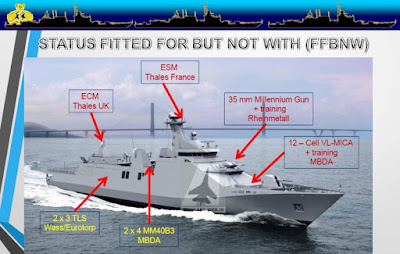Total of 6 planned to replace
. 2 under construction and another 4 planned. 2 ships will build by PT PAL Indonesia and Damen Schelde. Estimated arrival in 2017
Intention is one thing but realizing it might be difficult.Indonesia suffer large shortfall in income. There will be budget cut including military. As I said multiple time the underlying strength of one country is economy. Without strong economy you cannot build strong military
Why is Indonesia Set to Cut its Military Budget for 2016?
Move would be another blow to Jakarta’s military modernization efforts.
By
September 10, 2015
Indonesia is planning to cut its defense budget next year for the first time in five years, raising further doubts about the Asian power’s ability to transform its military.
Despite being the world’s largest archipelagic state and its fourth most populous country, Indonesia has significantly underinvested in its military relative even to its smaller Southeast Asian neighbors. Despite sharp increases in recent years, Indonesian defense spending as a percentage of GDP was the lowest in ASEAN at 0.8 percent in 2014, well below the regional average of 2.2 percent. President Joko “Jokowi” Widodo had come into office pledging to increase that figure to 1.5 percent of GDP and even double the budget in 2016 as Indonesia seeks to develop a Minimum Essential Force by 2024 (See: “
”).
But in a huge blow to those ambitions, local media reports
that the Indonesian government plans to cut its defense allocation next year by 6.3 percent, or Rp 7 trillion ($490 million), down to Rp 95.8 trillion. This would in effect reverse a trend seen over the past few years where budgets have risen from Rp 17 trillion in 2010 to 102.3 trillion in 2015. It would also further slow the pace of Indonesia’s military modernization which is badly needed given the country’s aging systems, limited capabilities and growing aspirations to be an influential power (See: “
”).
Indonesia’s newly installed military chief Gatot Nurmantyo indicated that the cut was due to the weak financial position of the government arising from global currency instability (See: “
”).
“When we drew up the draft 2015 state budget, we assumed that one US dollar would be worth Rp 12,500. The fact now is that one dollar is equal to Rp 14,000,” Gatot
reporters.
The reasoning itself is far from surprising. Indeed, as I pointed out in a piece back in May, few expected Jokowi’s ambitious plan to double Indonesia’s defense budget to materialize given the global financial conditions and its effects on Indonesia (See: “
”). As I noted in that piece, Jokowi had vowed to double the defense budget in 2016 if the economy grew by 7 percent. But with growth slipping to just 4.7 percent in the second quarter – its slowest pace in nearly six years – and the rupiah down 13 percent this year amid sluggish growth in China, Japan and the Eurozone, that seemed very unlikely to occur.
But a cut – as opposed to a slower increase – has significant implications because it will require reductions in certain areas, whether it be new equipment or personnel costs. Gatot has indeed already indicated that he will order a reduction in the procurement of new weapons in response to the planned budget cut. However, he also hinted that priority would still be placed on new equipment for the navy and air force even with the cuts in line with Jokowi’s so-called global maritime fulcrum (See: “
”). For instance, he noted that the Air Force could prioritize buying radars and Sukhoi SU-35 jet fighters, while the Navy could aim to procure submarines, frigates and radars.
“As we plan to turn Indonesia into a maritime axis, we should strengthen our presence in airspace and the sea,” he said.
Gatot’s comments may seem encouraging in that they suggest that Jokowi’s priorities will remain and that major acquisition programs will be shielded despite the cuts. And to be sure, the amount of money available for defense is only one – albeit a major – factor in Indonesia’s ongoing military modernization process. But at the same time, the focus on how a shrinking pie is divvied up will not distract Indonesia watchers from the fact that a pie, already far too small, is getting even smaller instead of continuing to grow at a faster pace.








